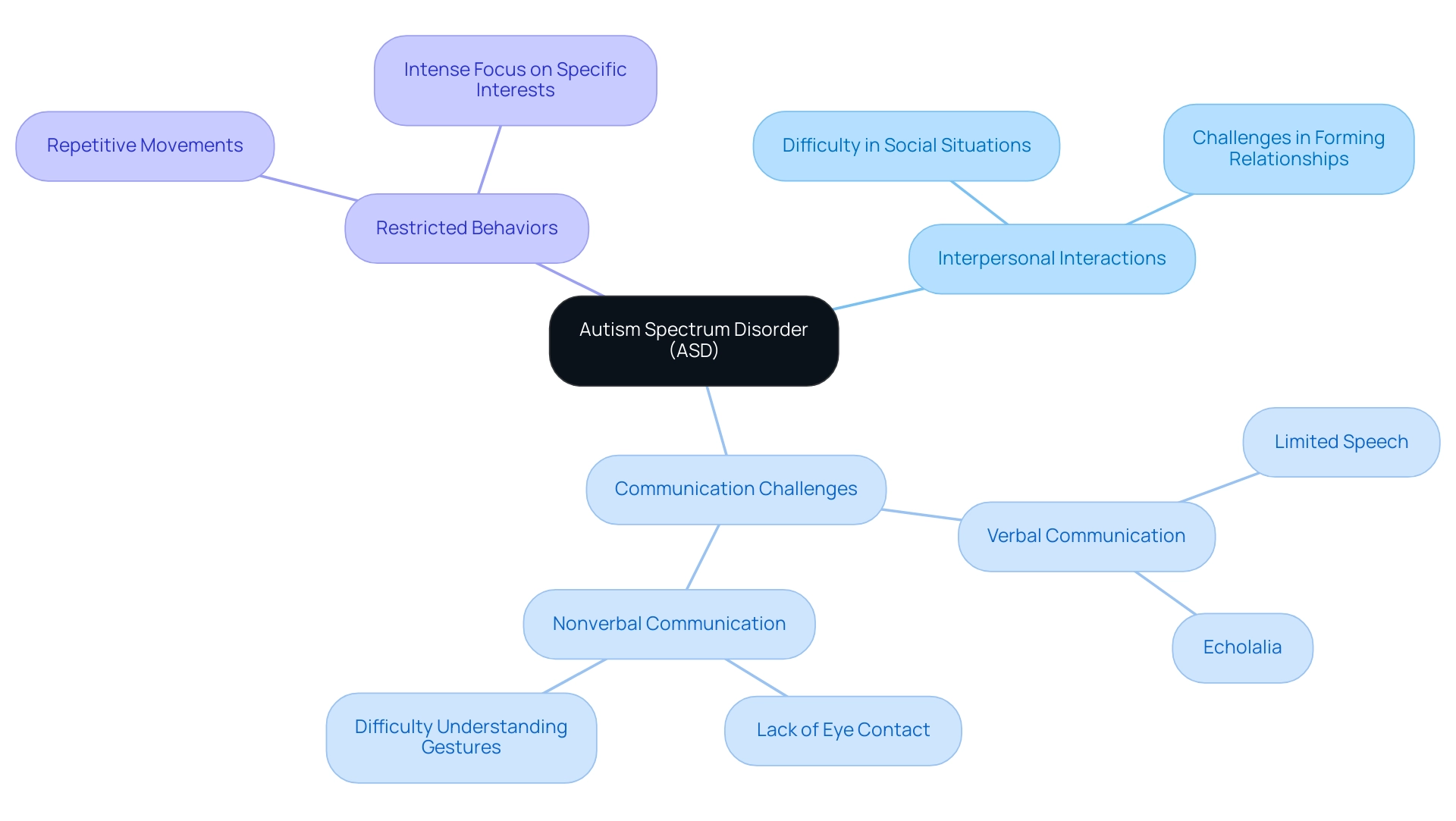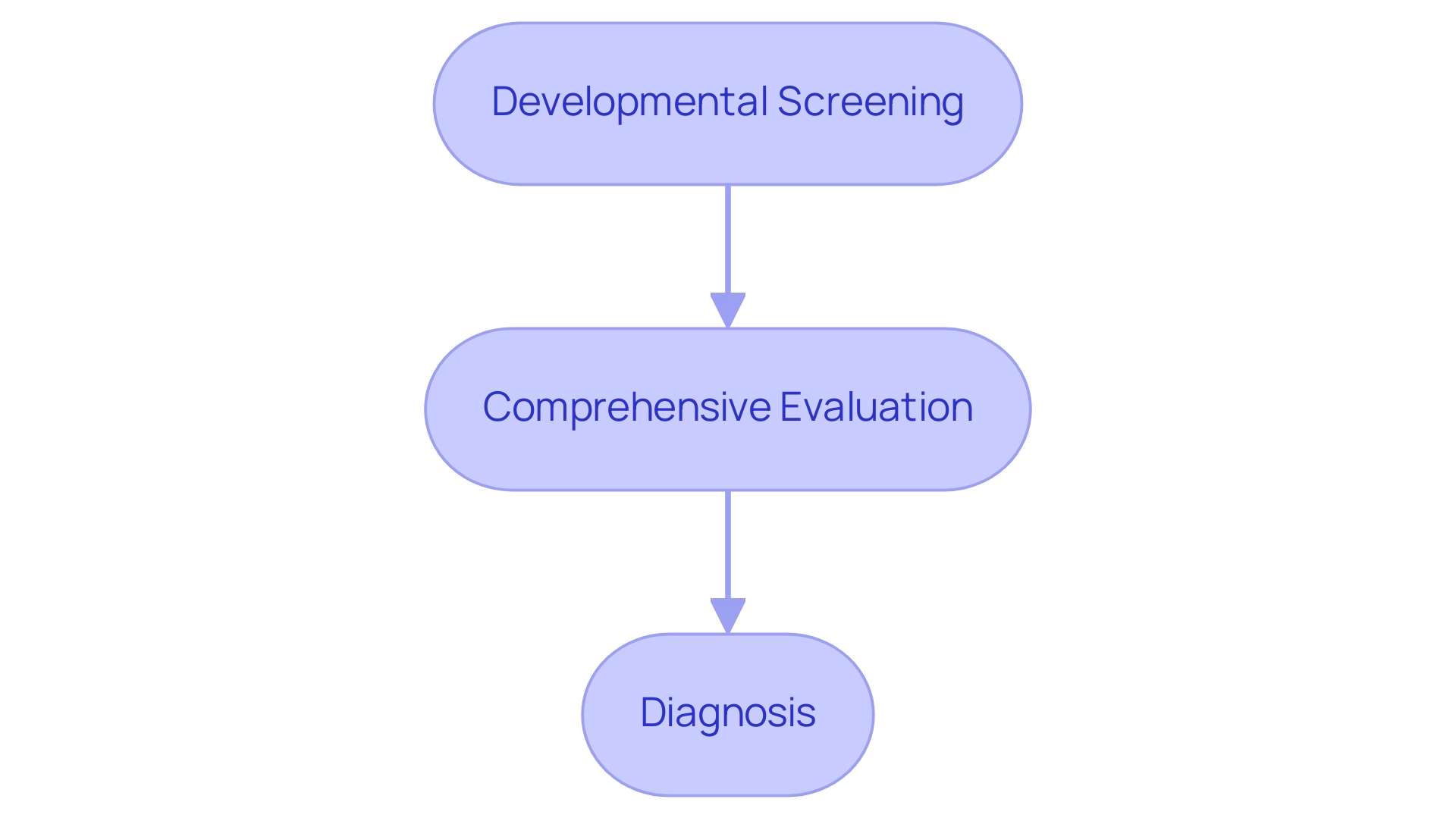Introduction
Autism Spectrum Disorder (ASD) presents a unique set of challenges and opportunities for children and their families. With its diverse characteristics, ranging from social communication difficulties to repetitive behaviors, understanding ASD is essential for fostering an environment where children can thrive.
Early identification and intervention can make a profound difference, equipping parents and educators with the knowledge needed to support these children effectively.
This article delves into the critical aspects of ASD, including:
- Recognizing its signs and symptoms
- Navigating the assessment process
- Accessing vital support services
Empowering parents with this information not only enhances their advocacy but also ensures that children with ASD receive the care and resources they deserve.
Understanding Autism Spectrum Disorder: Definition and Characteristics
Autism Spectrum Disorder (ASD) is a developmental disorder characterized by a range of behavioral, communication, and interpersonal challenges. The characteristics of ASD can vary widely among individuals, making it a spectrum condition. Common signs of ASD include:
- Difficulties with interpersonal interactions
- Challenges in verbal and nonverbal communication
- Restricted or repetitive behaviors
Comprehending these traits is essential for parents and educators, as early detection and customized assistance can significantly enhance results for individuals with ASD.

Identifying the Signs and Symptoms of ASD
The signs of ASD can manifest in various ways. Key indicators include:
- Social Communication Challenges: Difficulty in making eye contact, understanding social cues, or engaging in back-and-forth conversations.
- Repetitive Behaviors: Engaging in repetitive motions, such as hand-flapping or rocking, or having a strong preference for routines.
- Restricted Interests: Intense focus on specific topics or objects, often at the expense of broader interests.
Identifying these signs of ASD early can enable timely evaluation and assistance, which is crucial for the young one's development.

The Assessment and Diagnosis of Autism Spectrum Disorder
The process of assessing and diagnosing Autism Spectrum Disorder typically involves several key steps:
- Developmental Screening: Pediatricians usually conduct preliminary screenings during regular check-ups to identify any developmental concerns.
- Comprehensive Evaluation: If concerns are noted, a detailed evaluation is conducted by specialists, which may include interviews, behavioral observations, and standardized tests.
- Diagnosis: Based on the assessment findings, a diagnosis may be made according to criteria outlined in the DSM-5.
Grasping this process empowers parents and educators to pursue suitable assessments and assistance, guaranteeing that youngsters obtain the essential interventions.

Navigating Support Services for Children with ASD
Parents and educators can access a range of assistance services for kids with ASD, including:
- Early Intervention Programs: These initiatives offer specialized assistance to young individuals, concentrating on improving communication, interpersonal skills, and conduct.
- ABA Therapy: Applied Behavior Analysis is a widely recognized therapy that uses techniques to improve social behaviors and reduce challenging behaviors.
- School-Based Services: Individualized Education Programs (IEPs) can be created to ensure students receive customized educational assistance.
- Support Groups: Connecting with local and online support groups can provide invaluable resources and a sense of community for parents navigating similar challenges.
Utilizing these resources effectively can lead to significantly improved outcomes for children showing signs of ASD.

Conclusion
Understanding Autism Spectrum Disorder is essential for creating a nurturing environment where children can flourish. This article highlighted the defining characteristics of ASD, emphasizing the importance of recognizing signs and symptoms early. By identifying challenges in social communication, repetitive behaviors, and restricted interests, parents and educators can facilitate timely assessments and interventions that are crucial for development.
Navigating the assessment process is another critical step in supporting children with ASD. From developmental screenings to comprehensive evaluations, being informed about the diagnostic process empowers parents to advocate effectively for their children. This knowledge is vital in ensuring that children receive the appropriate support tailored to their unique needs.
Finally, accessing support services can significantly enhance the lives of children with ASD and their families. Early intervention programs, ABA therapy, and school-based services, along with support groups, provide valuable resources that contribute to improved outcomes. Embracing these tools not only fosters growth in children with ASD but also strengthens the community around them.
With awareness, advocacy, and access to resources, parents can play a pivotal role in their children's journey, ensuring they receive the care and support necessary to thrive. The journey may be challenging, but with the right information and support, the potential for success is boundless.




